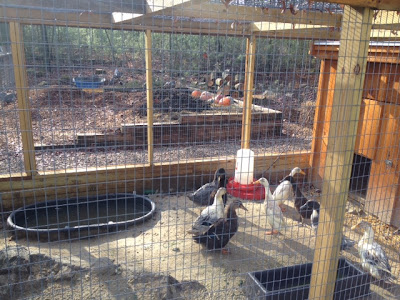Snow will begin falling in New England over the next few weeks. Most nights have subfreezing low temperatures and it's challenging to maintain water sources for the animals and plants on the farm.
How do we do it? Heated buckets, heated troughs, heated poultry waterers, heating panels, and yard hydrants.
Here's how it all works:
Ducks - ducks are very resilient to cold and enjoy living outside, only retreating to the duck house in the most severe weather. Within their pen, the ducks have a heated 50 gallon stock tank/water trough and a heated poultry waterer. Both activate at 35F. In the duck house, the ducks have a safe Infratherm heating panel which raises the temperature of the space by 10F and is activated by a 35F on/45F off Thermocube. Never use a heat lamp to heat a coop. Every winter, stories abound about unnecessary coop fires.
Chickens - the chickens are also resilient to cold but prefer to roost inside the coop on very cold or windy days. They have a poultry water heater (activated at 35F), a heated 5 gallon bucket "nipple waterer" which includes 4 small drinking spigots, and 4 infratherm heating panels that raise the temperature of the coop 10 degrees F.
Alpaca/Llama/Dogs - they have 5 gallon heated buckets (activated at 35F)
Hoop House and Barn water - we use yard hydrants which are supplied from pipes buried 4 feet deep below the frost line. This enables us to fill buckets and water plants even in the coldest part of winter.
We have 350 bales of hay in the loft, 4 tons of alfalfa in the barn, 300 pounds of poultry grain in waterproof cans and 300 pounds of ice melter (animal safe magnesium chloride).
Let it snow!
Thursday, December 5, 2013
Subscribe to:
Post Comments (Atom)











0 comments:
Post a Comment